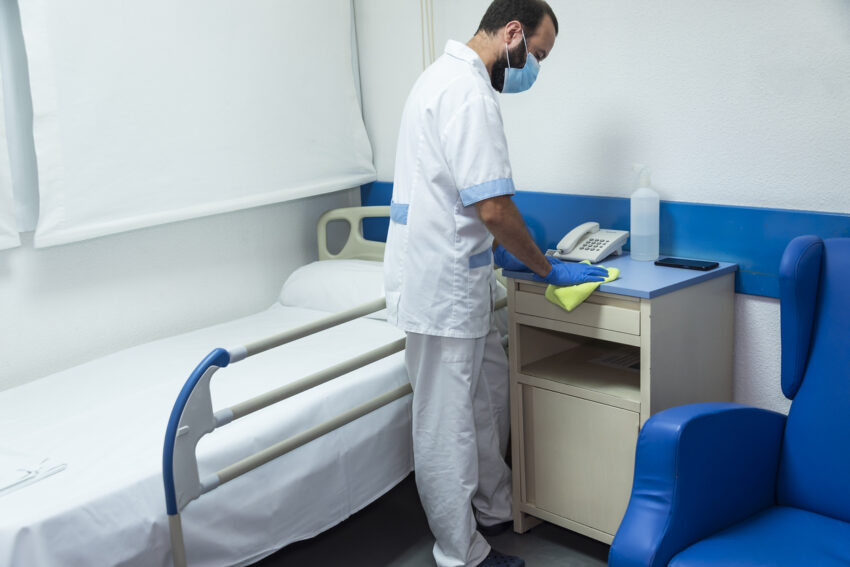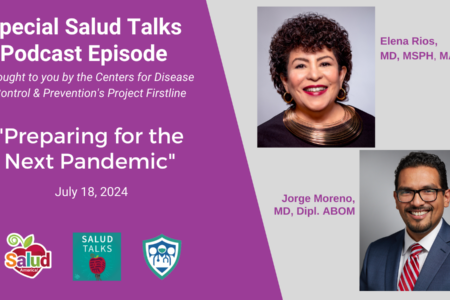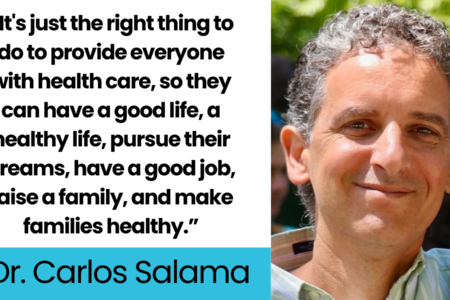
Share On Social!
Hospitals, clinics, and nursing homes are where people come for care, so there is a high chance some patients will have an infection.
When a person has an infection, their immune system may be weakened, making them more vulnerable to developing other infections or illnesses.
That’s why it’s important to be aware of the things we do in healthcare that can put patients at greater risk of infection.
For example, if a patient needs an IV, there’s a risk for infection if germs on their skin are pushed into their body by the needle, or if germs on the needle or another piece of equipment get into their body.
In healthcare, we are more concerned about some germs than others based on:
- The amount of them in the environment.
- If they can cause an outbreak in a healthcare facility or in the community.
- How easily our bodies can defend against them.
- How they affect people who are ill or weak.
- How much harm an infection from them will cause.
- If they are resistant to antibiotics, which means that the germs have developed the ability to defeat the drugs designed to kill them.
Infection Control is for All Healthcare Settings
While different healthcare settings have different purposes, goals, challenges, patient populations, and healthcare workers, infection control is important everywhere healthcare is delivered and for every person working in or visiting those places.
The work we do in healthcare presents many opportunities for germs to spread, including our interactions with others and the surfaces and objects we touch.
Therefore, infection control actions keep the opportunity for germs to spread from becoming an actuality.
What Can You Do to Promote Infection Control in Your Healthcare Setting?
It is important to protect yourself, patients, and colleagues from germs that can spread from the healthcare environment.
Remember to properly clean your hands and wear appropriate PPE, such as gloves and N95 respirators, as needed.
Access more information about infection prevention and control in healthcare by visiting resources from CDC Project Firstline.
Project Firstline creates resources, including videos and shareable images, web buttons, posters, and print materials. They also have facilitator toolkits to help workers lead trainings even if they are not an infection control expert.
Salud America! at UT Health San Antonio is working with the National Hispanic Medical Association to bring Project Firstline infection control educational content to healthcare workers, so they are equipped with the knowledge they need to protect themselves, their facilities, and their patients (Latinos and all communities) from infectious disease threats in healthcare settings.
You can read these articles:
- What is Project Firstline?
- What’s a Virus?
- How Do Viruses Make Us Sick?
- What is Ventilation and Why Does It Matter?
- What’s a Respiratory Droplet and Why Does It Matter?
- Why Do Cleaning and Disinfection Matter in Healthcare?
- We Need to Talk about Hand Hygiene Again
- What is the Goal of Infection Prevention and Control in Healthcare Settings?
- N95 Respirators: Everything You Need to Know
- How Do I Safely Use a Multi-Dose Vaccine Vial?
- Why are Gowns, Gloves, and Eye Protection Recommended for COVID-19?
“Healthcare teams in hospitals, nursing homes, and other care settings are the front lines against the spread of infection,” said Dr. Amelie G. Ramirez, director of Salud America! at UT Health San Antonio. “CDC’s Project Firstline is bolstering those efforts by developing evidence-based tools that can be delivered in a variety of ways to make infection control learning convenient and accessible for busy healthcare staff.”
Learn More about Project Firstline!
Editor’s Note: This article is part of a collaboration between Salud America!, the National Hispanic Medical Association, and the CDC’s Project Firstline. To find resources training materials, and other tools to bolster knowledge and practice of infection control, visit Project Firstline and view Salud America!’s infection control content.
Explore More:
Infection ControlBy The Numbers
142
Percent
Expected rise in Latino cancer cases in coming years



